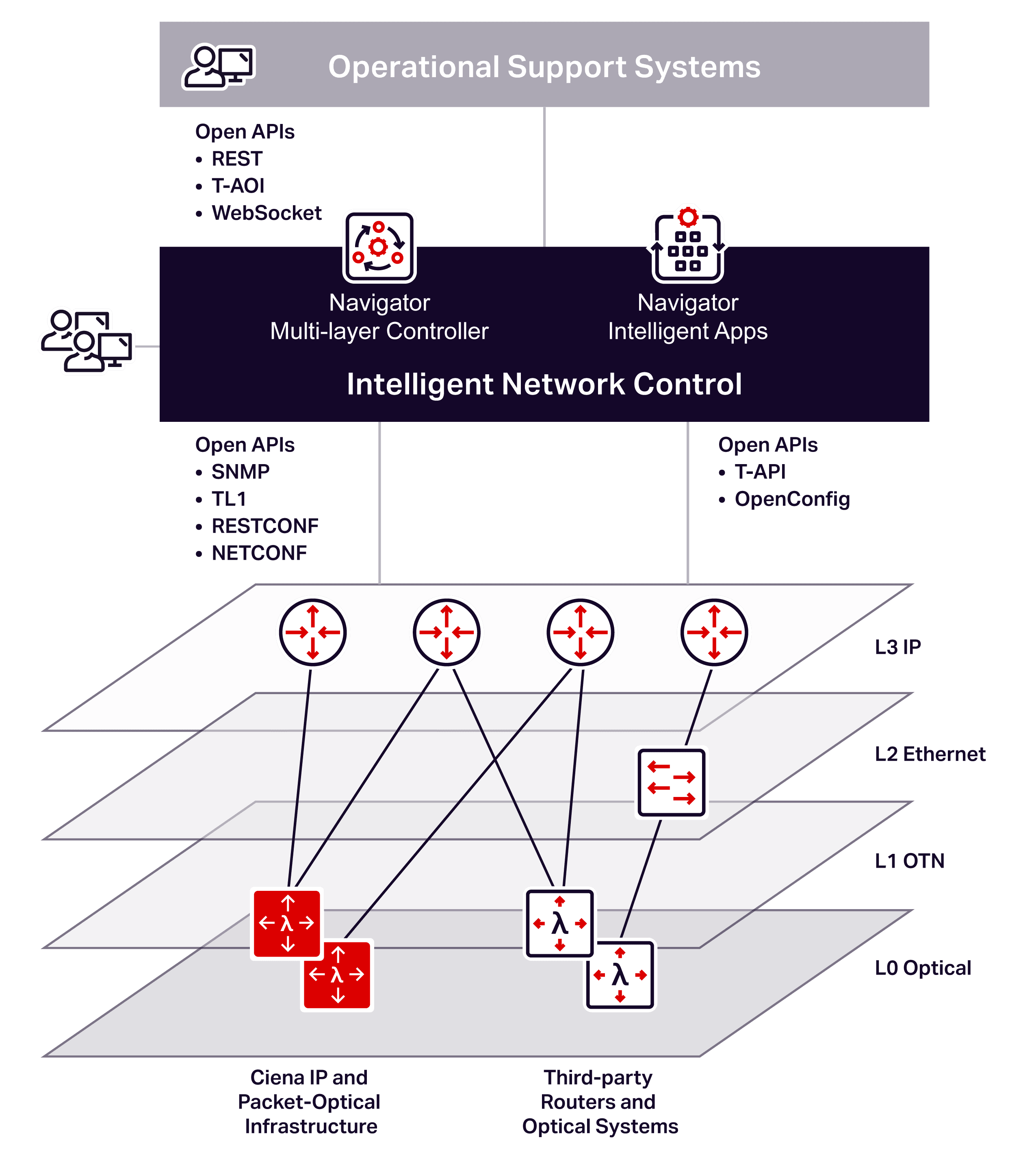Intelligent network control goes beyond legacy network management systems (NMS) and even beyond industry-standard software-defined networking (SDN) to take network operations to a new level of efficiency and automation. With software control powered by analytics, operational workflows are greatly simplified across multiple technology layers, enabling quicker and more optimized network buildouts, service turn-up, problem diagnosis, and trouble resolution. That’s business agility.
In telecommunications networks, technology is king. Technological innovations embedded within hardware are pushing the boundaries of physical limits. Although state-of-the-art hardware is absolutely necessary to deliver high-bandwidth internet and cloud connectivity to everyone, everywhere, hardware alone cannot efficiently adjust to the dynamic demands of today’s market.
Once viewed as just an ‘enabler’ of hardware, software has come a long way. So has network operations, which is no longer seen as just a means to commission, configure, upgrade, and monitor hardware devices to ensure that the overall network stays up and running. Over a decade ago, SDN changed the NMS game by advocating for centralized software control of networks of multi-vendor devices through open, standardized interfaces. Years later, the cloud and mobility era hit with an ever-increasing demand for higher bandwidth, faster connectivity, and greater scale. The value of software rose once again—this time exponentially.
Now, snazzy user interfaces and automation are not just the purview of commercial B2C applications—telecommunications itself is at the software frontier, with network operators leveraging analytics, machine learning (ML), and artificial intelligence (AI). The barometer of success is network adaptability—and it can’t be achieved without intelligent network control.
What is intelligent network control? It’s that sweet spot of marrying software control with advanced analytics to drive closed-loop automation and stay ahead of the market demand curve in the most effective way possible. And the insights that drive intent-based policies are getting even smarter with AI. In a nutshell, intelligent network control is software control driven by analytics, enabling automation of multi-layer, multi-vendor network operations throughout the entire network lifecycle—boosting business agility and efficiency. Such comprehensive control and visibility are of paramount importance today as new technologies, such as 5G, cloud, and IP/Optical convergence, drive consolidation and transformation of network infrastructure.

Figure 1: Ciena’s Navigator NCS delivers intelligent multi-layer network control, enabling the Adaptive Network
Ciena offers intelligent network control in one integrated suite: Navigator Network Control Suite™ (Navigator NCS). Powerful Navigator Multi-layer Controller (Navigator MC) capabilities are enhanced with Navigator Intelligent Apps (Navigator IA), delivering unprecedented real-time insights into the state of the end-to-end network through a unified interface. Liquid SpectrumTM provides real-time analytics and visibility across Ciena’s programmable photonic layer. Adaptive IPTM Apps provide multi-vendor IP performance analytics so that operators can quickly identify and resolve performance issues and engineer the network to deliver the highest possible quality of experience (QoE). Multi-layer Operations apps present multi-layer operational data in an easily consumable manner and automate cross-layer repetitive management tasks, helping to mitigate and expedite troubleshooting.
Navigator NCS comprehensive visibility across all layers of the network drives informed, optimized operational decisions. Whereas network operations teams were traditionally siloed between L0 optical, L1 optical transport network (OTN), L2 Ethernet, and L3 IP/MPLS, Navigator NCSs unifies network and service management in a single interface for all technology layers in the network. This drives consistency of operational workflows across layers and cross-correlation, enabling more effective utilization of network assets and improved customer service assurance.

Figure 2: Navigator NCS open APIs facilitate integration and automation with third-party systems
No network is stagnant—there are ongoing optimizations and buildouts in order to adapt to dynamic, increasing customer demands. To simplify capacity management, Ciena’s PlannerPlus network design and planning tool is seamlessly integrated with Navigator MC so that completed network designs can be deployed easily via auto-assist device commissioning and service provisioning.
But before a new network augmentation can go live, integration testing needs to be done with existing network infrastructure as well as back-end operational support systems. No problem! The Emulation Cloud™ lab environment provides open application programming interface (API) access to emulated devices, configurations, and services so network operators can easily get a head-start on integration testing to expedite their deployment process (without the lead-time and cost associated with building out their own lab). And when more resources and/or knowledge are needed, Ciena’s Services team of experts can lend a hand to help operationalize Navigator NCS and realize the benefits of intelligent network control as soon as possible.
Now that you’re familiar with all that intelligent network control has to offer, are you ready to take your network operations to the next level?




